Abstract
Light induces β-carotene synthesis in streptomycin-bleached Euglena gracilis Z. Light-adapted, chemostat-grown cells have up to 10-fold as much β-carotene and 25% more protein than similarly grown, dark-adapted cells. Carotenogenesis does not occur under anaerobic conditions or in the presence of diphenylamine, cyanide, or cycloheximide. The blue portion of the spectrum (360-560 nm) is most active in initiating carotenogenesis. The level of cellular carotenoids is influenced by the type of carbon source and to some degree by pH. Phytofluence and ζ-carotene are present in dark-grown cells but not in cells grown aerobically in white light (360-1120 nm). These pigments, however, were present in cells grown in yellow or green light (above 486 nm) or in cells exposed to white light anaerobically. The carotenoids are localized in two types of structures at the light microscope level. A protoporphyrin was isolated from Euglena, and its role as a possible photoreceptor during carotenogenesis is suggested.
Full text
PDF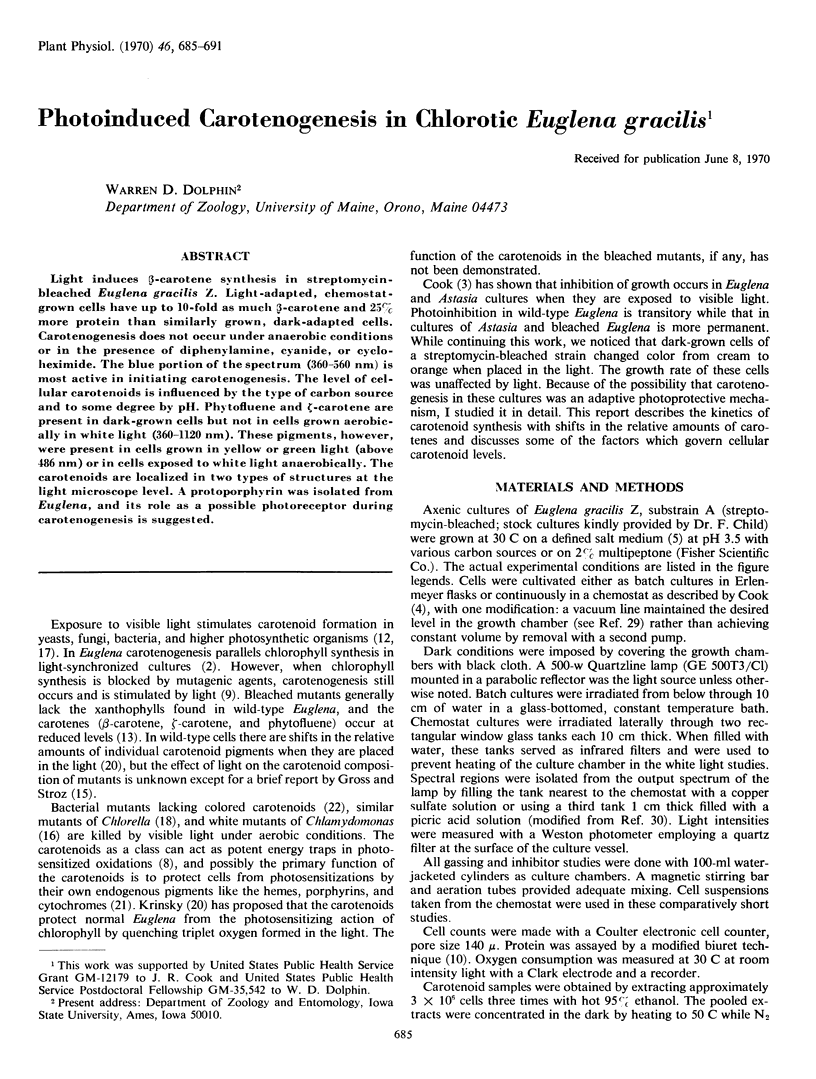
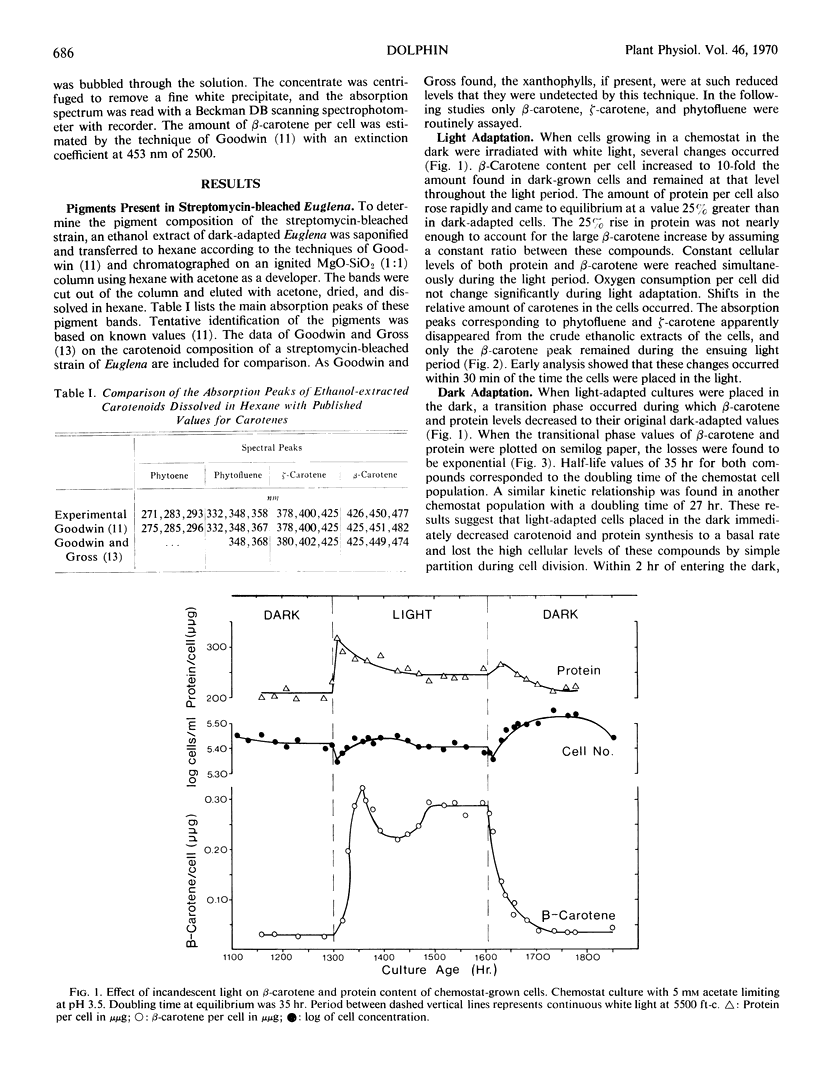
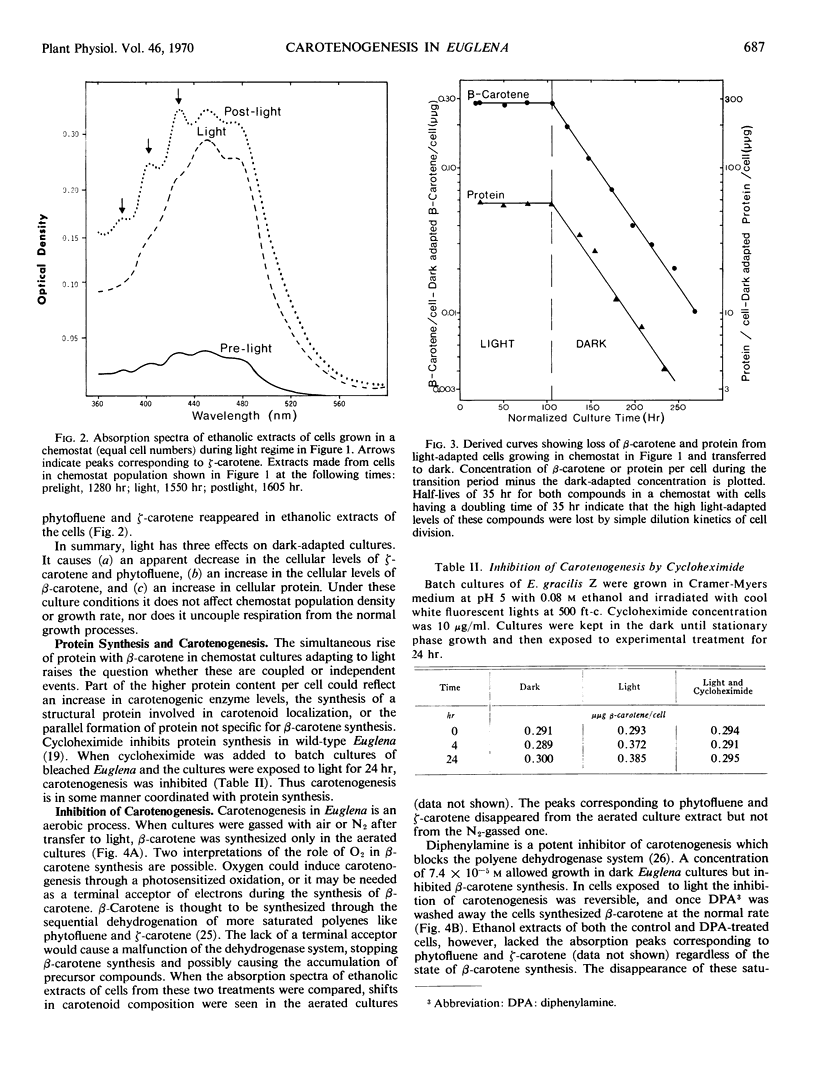
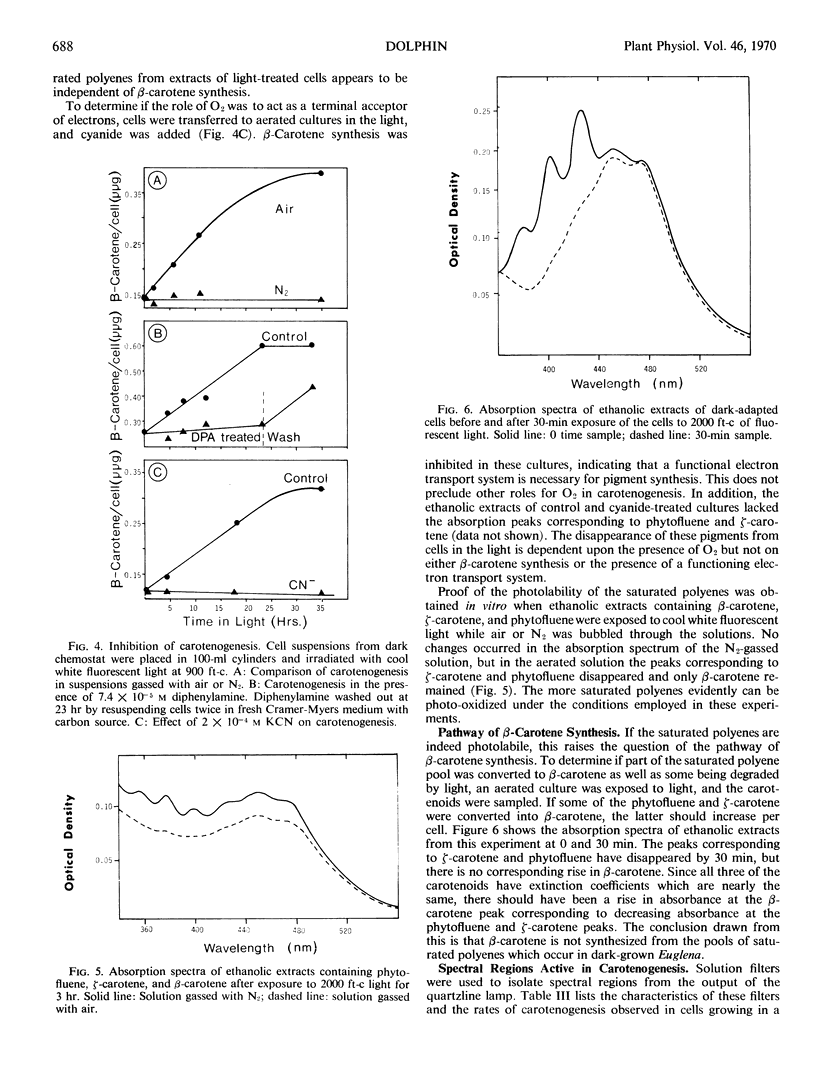

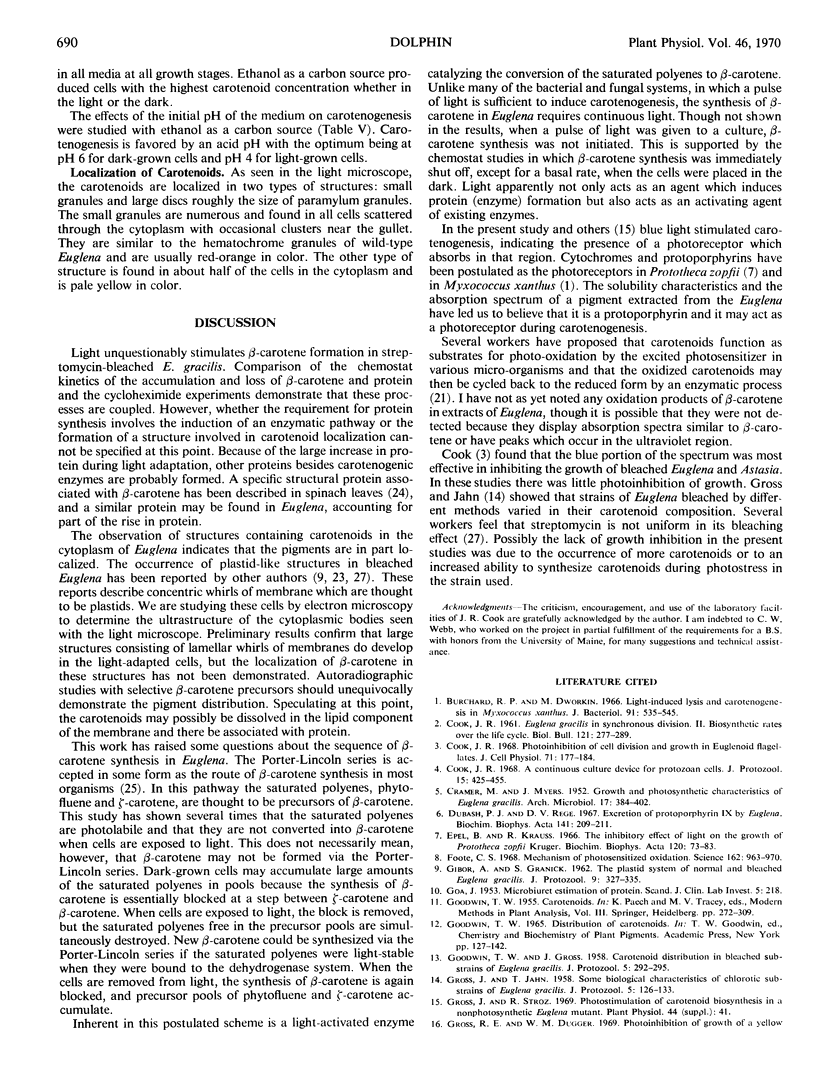
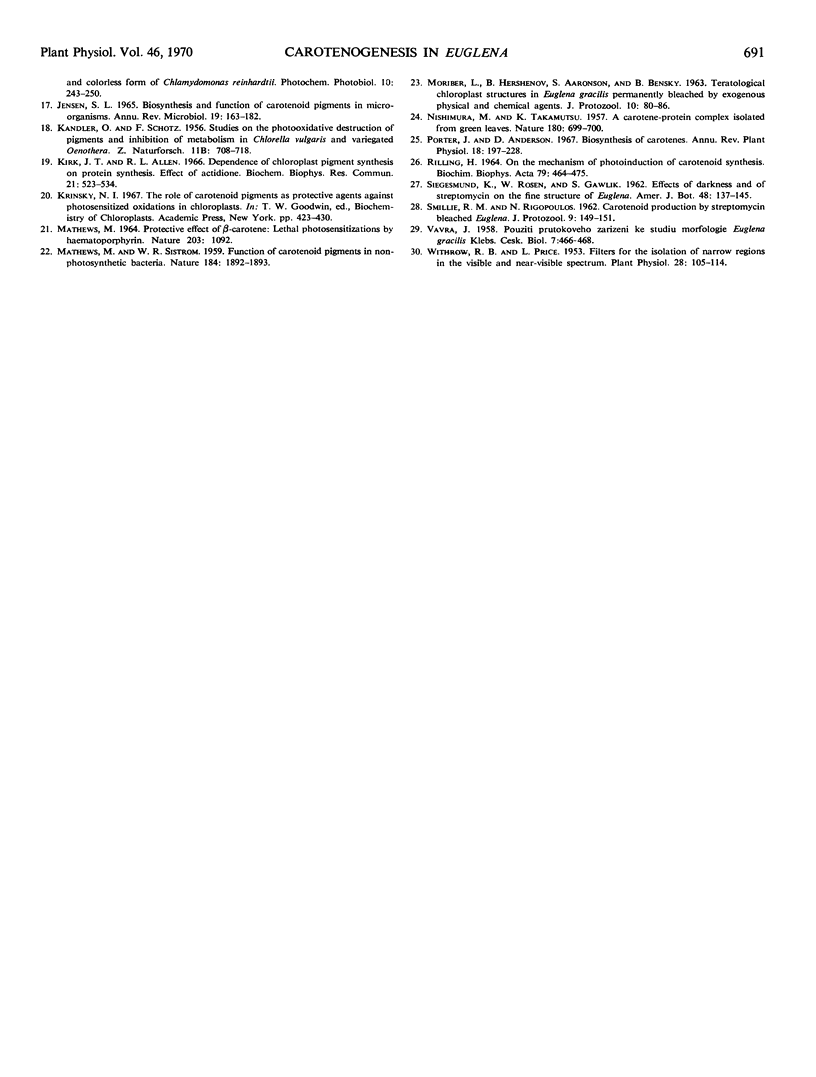
Selected References
These references are in PubMed. This may not be the complete list of references from this article.
- Burchard R. P., Dworkin M. Light-induced lysis and carotenogenesis in Myxococcus xanthus. J Bacteriol. 1966 Feb;91(2):535–545. doi: 10.1128/jb.91.2.535-545.1966. [DOI] [PMC free article] [PubMed] [Google Scholar]
- Cook J. R. A continous culture device for protozoan cells. J Protozool. 1968 Aug;15(3):452–455. doi: 10.1111/j.1550-7408.1968.tb02155.x. [DOI] [PubMed] [Google Scholar]
- Cook J. R. Photo-inhibition of cell division and growth in euglenoid flagellates. J Cell Physiol. 1968 Apr;71(2):177–184. doi: 10.1002/jcp.1040710209. [DOI] [PubMed] [Google Scholar]
- Dubash P. J., Rege D. V. Excretion of protoporphyrin IX by Euglena. Biochim Biophys Acta. 1967 Jun 13;141(1):209–211. doi: 10.1016/0304-4165(67)90268-1. [DOI] [PubMed] [Google Scholar]
- Epel B., Krauss R. W. The inhibitory effect of light on growth of Prototheca zopfii Kruger. Biochim Biophys Acta. 1966 May 12;120(1):73–83. doi: 10.1016/0926-6585(66)90278-0. [DOI] [PubMed] [Google Scholar]
- Foote C. S. Mechanisms of photosensitized oxidation. There are several different types of photosensitized oxidation which may be important in biological systems. Science. 1968 Nov 29;162(3857):963–970. doi: 10.1126/science.162.3857.963. [DOI] [PubMed] [Google Scholar]
- GOA J. A micro biuret method for protein determination; determination of total protein in cerebrospinal fluid. Scand J Clin Lab Invest. 1953;5(3):218–222. doi: 10.3109/00365515309094189. [DOI] [PubMed] [Google Scholar]
- Gross R. E., Dugger W. M. Photoinhibition of growth of a yellow and colorless form of Chlamydomonas reinhardtii. Photochem Photobiol. 1969 Oct;10(4):243–250. doi: 10.1111/j.1751-1097.1969.tb05687.x. [DOI] [PubMed] [Google Scholar]
- Jensen S. L. Biosynthesis and function of carotenoid pigments in microorganisms. Annu Rev Microbiol. 1965;19:163–182. doi: 10.1146/annurev.mi.19.100165.001115. [DOI] [PubMed] [Google Scholar]
- Kirk J. T., Allen R. L. Dependence of chloroplast pigment synthesis on protein synthesis: effect of actidione. Biochem Biophys Res Commun. 1965 Dec 21;21(6):523–530. doi: 10.1016/0006-291x(65)90516-4. [DOI] [PubMed] [Google Scholar]
- MATHEWS M. M. PROTECTIVE EFFECT OF BETA-CAROTENE LETHAL PHOTOSENSITIZATION BY HAEMATOPORPHYRIN. Nature. 1964 Sep 5;203:1092–1092. doi: 10.1038/2031092a0. [DOI] [PubMed] [Google Scholar]
- MATHEWS M. M., SISTROM W. R. Function of carotenoid pigments in non-photosynthetic bacteria. Nature. 1959 Dec 12;184(Suppl 24):1892–1893. doi: 10.1038/1841892a0. [DOI] [PubMed] [Google Scholar]
- NISHIMURA M., TAKAMATSU K. A carotene-protein complex isolated from green leaves. Nature. 1957 Oct 5;180(4588):699–700. doi: 10.1038/180699a0. [DOI] [PubMed] [Google Scholar]
- RILLING H. C. ON THE MECHANISM OF PHOTOINDUCTION OF CAROTENOID SYNTHESIS. Biochim Biophys Acta. 1964 May 25;79:464–475. doi: 10.1016/0926-6577(64)90212-8. [DOI] [PubMed] [Google Scholar]
- Withrow R. B., Price L. Filters for the Isolation of Narrow Regions in the Visible and Near-Visible Spectrum. Plant Physiol. 1953 Jan;28(1):105–114. doi: 10.1104/pp.28.1.105. [DOI] [PMC free article] [PubMed] [Google Scholar]


